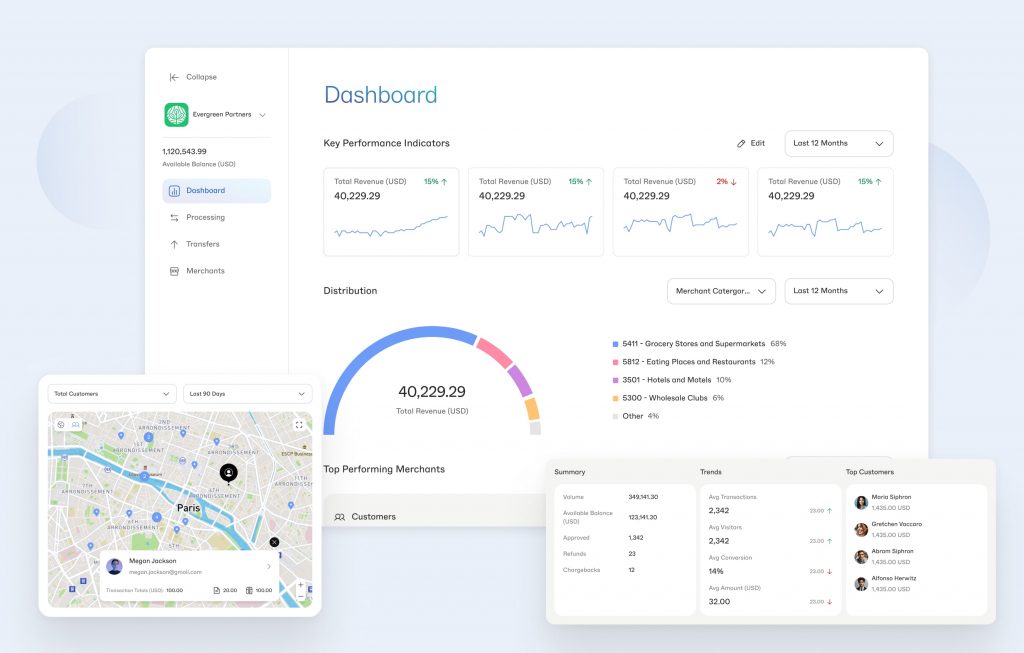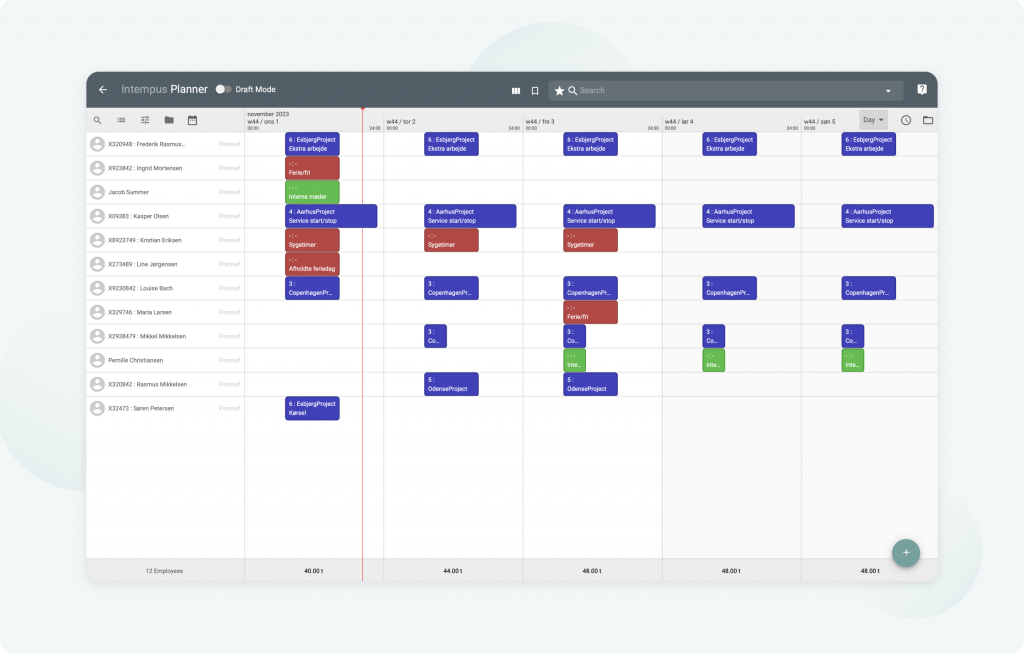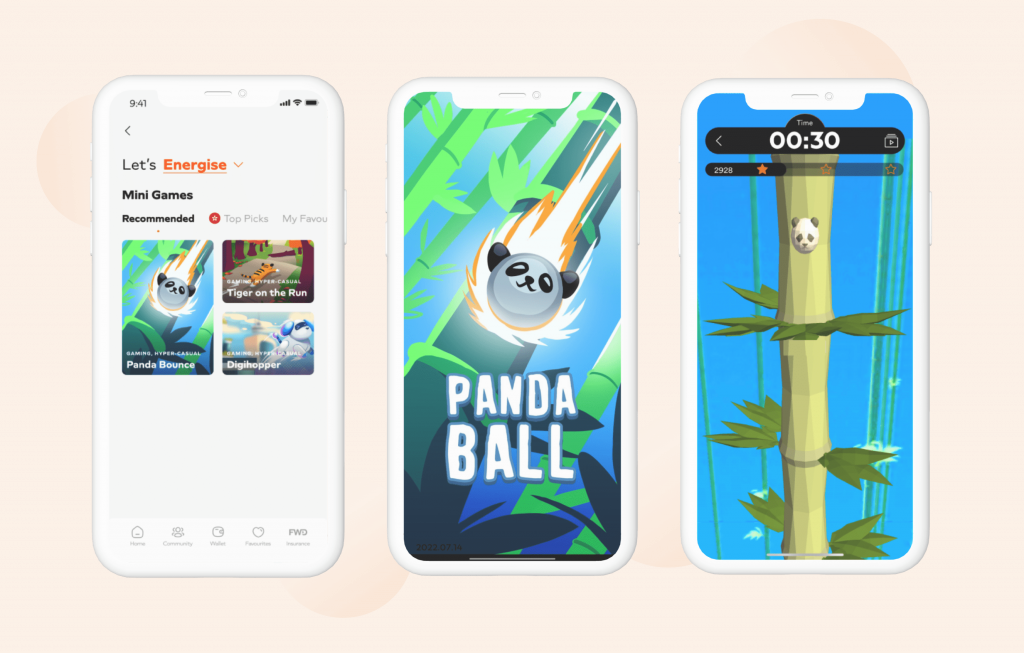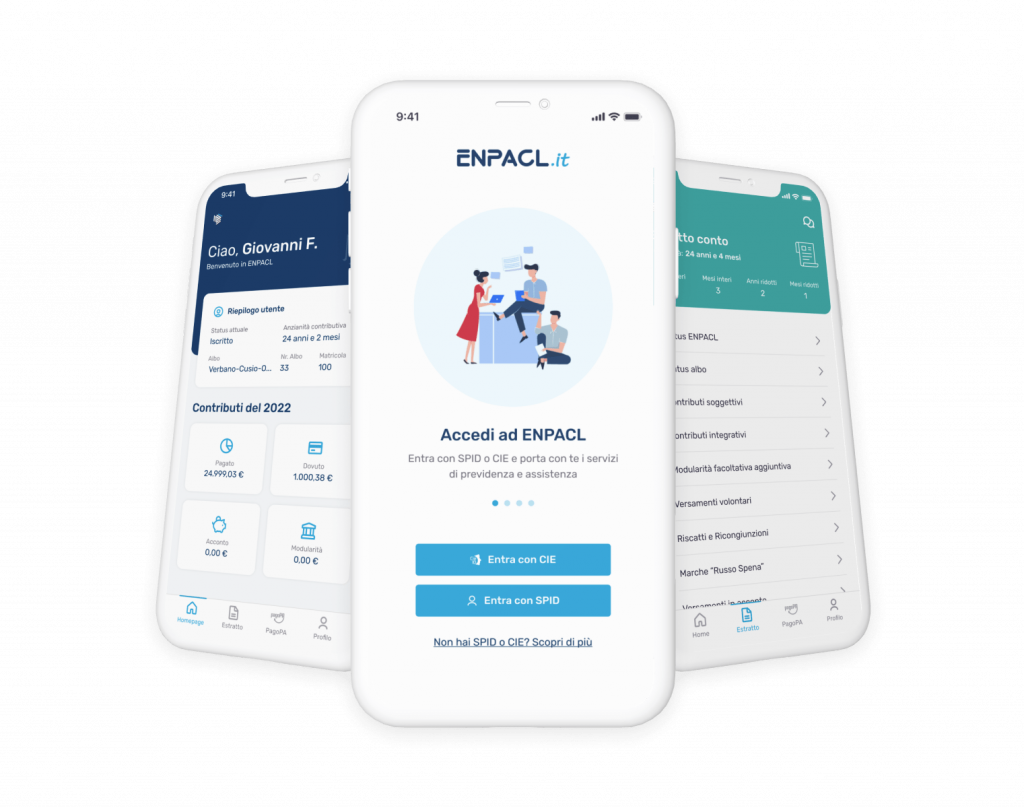打造卓越软件
让我们一起创造非凡。
Lasting Dynamics 提供无与伦比的软件质量。
Giuseppe Avagliano
7 月 25, 2025 • 11 min read

React Native and React continue to dominate web and mobile app development in 2025. But knowing how and when to use each can save you time, money, and headaches.
React and React Native are two of the most powerful tools in the developer's toolkit. They power everything from cutting-edge SaaS platforms to high-performance mobile apps. Whether you're building a fintech dashboard, a social media app, or a digital health solution, your choice between React and React Native has long-term implications.
In this comprehensive guide, we unpack the differences, similarities, and ideal use cases. You'll also get expert insight into how Lasting Dynamics leverages both technologies to deliver award-winning digital solutions for global clients.
React, often referred to as React.js, is a foundational JavaScript library maintained by Meta (formerly Facebook) that allows you to build highly interactive and efficient web applications. It revolutionized front-end development by introducing a component-based architecture that promotes reusability, clarity, and separation of concerns. By using a virtual DOM, React enables developers to render changes with minimal performance cost, making it a preferred choice for large-scale applications.
When comparing React Native and React, it’s important to note that React focuses strictly on the web. It thrives in environments that demand dynamic interfaces and real-time updates—such as SaaS platforms, CRM dashboards, analytics portals, and e-commerce applications. What makes React powerful is not only its tooling but its ecosystem of extensions like Redux, Next.js, and Tailwind CSS, which help developers go from prototype to production with ease.
Choosing between React Native and React often begins here—with a need to craft a seamless, intuitive web experience. Companies like Netflix, Airbnb, and Uber heavily invest in React because of its ability to scale quickly while maintaining performance and modularity. At Lasting Dynamics, we’ve used React in numerous client-facing portals where user experience and speed are paramount.

React Native is a game-changing mobile framework that enables developers to build fully functional iOS and Android apps using JavaScript and the core logic of React. Instead of rendering content in a browser like React, React Native translates React components into native mobile UI elements using platform-specific APIs. This approach offers a near-native experience—without requiring separate Swift, Kotlin, or Java codebases.
Understanding the difference between React Native and React starts here: React Native bridges the web-native divide, giving teams the ability to share a large portion of their codebase while still delivering high-performance mobile apps. What makes it so effective is its developer-friendly tools like Expo, Hot Reloading, and cross-platform design components, which streamline development and testing.
React Native is widely used in industries where fast iterations and consistent mobile performance matter—such as wellness apps, fintech tools, and on-demand services. At Lasting Dynamics, we’ve employed React Native to reduce time-to-market for MVPs and enterprise-grade apps alike, often integrating native modules for enhanced features such as Bluetooth, camera access, and offline data syncing.
Though they share a common origin and syntax, the contrast between React Native and React becomes more evident when you look at their environments and rendering models. React is built for the browser and manipulates the DOM, while React Native renders native widgets, giving users the look and feel of a native app. This structural difference impacts how you handle styling, routing, and performance optimization.
让我们一起创造非凡。
Lasting Dynamics 提供无与伦比的软件质量。
In React, developers work with traditional CSS or CSS-in-JS solutions to style components. In contrast, React Native uses its own styling engine inspired by CSS but adapted for mobile platforms. Navigation also differs significantly: React uses libraries like React Router for web routing, whereas React Native relies on React Navigation for stack, tab, and drawer navigators in mobile apps.
Choosing between React and React Native should be dictated by your target platform. While their architectural foundations are similar, the underlying technologies that power their user interfaces are not interchangeable. At Lasting Dynamics, we guide our clients through these distinctions, helping them select the right tool for the job based on performance, budget, and long-term scalability.
Despite their surface differences, React Native and React are united by a shared philosophy and technical foundation. Both adopt a declarative paradigm for UI development, allowing developers to describe what the UI should look like at any point in time. This approach reduces bugs and increases clarity, especially in complex interfaces.
Both frameworks use JSX, a JavaScript syntax extension that blends HTML-like tags with JavaScript logic. Developers who learn React can apply nearly all of their knowledge when transitioning to React Native. The shared principles—like hooks, context APIs, component lifecycle, and one-way data flow—make switching between platforms smoother and more efficient.
The interoperability between React Native and React gives teams a strategic edge. At Lasting Dynamics, we’ve helped companies unify their tech stack by training developers on both frameworks. This flexibility allows businesses to allocate resources efficiently, onboard talent quickly, and future-proof their applications by investing in a single ecosystem.

React shines in any scenario that requires a dynamic, data-driven web interface. It’s the go-to choice for applications that involve frequent user interactions, real-time updates, and responsive layouts. Think enterprise dashboards, booking platforms, online marketplaces, and multi-language portals—React handles them with elegance and efficiency.
Because of its flexibility, React integrates well with back-end technologies like Node.js and GraphQL, and front-end frameworks like Next.js, making it suitable for both static site generation (SSG) and server-side rendering (SSR). If SEO is critical for your product, React—when used with Next.js—can ensure fast load times and optimal search engine indexing.
When weighing the decision between React Native and React, it’s essential to consider your user base. If your audience primarily accesses your product via desktop or web browser, React is almost always the superior choice. Lasting Dynamics regularly builds React-based platforms that support thousands of concurrent users with intuitive UI/UX flows tailored to their business logic.
React Native becomes the ideal choice when your project demands a native mobile experience without the overhead of maintaining separate codebases for iOS and Android. It’s especially useful for startups and fast-moving teams looking to validate their ideas quickly with a robust MVP. Additionally, many established companies use React Native to expand their digital presence efficiently.
从创意到发布,我们根据您的业务需求量身打造可扩展的软件。
与我们合作,加速您的成长。
Applications like fitness trackers, e-learning apps, social platforms, and on-demand services benefit from React Native's access to device APIs and optimized mobile UI components. These capabilities allow for immersive mobile-first experiences that feel polished and professional—while still being faster to build and easier to maintain than dual native apps.
When considering React Native vs React, remember that React Native is not limited to MVPs. With the right team and architecture, it scales well into production-grade mobile apps used by millions. At Lasting Dynamics, we’ve helped enterprise clients build highly performant apps using React Native, complete with deep integrations, analytics, and real-time features.
Performance is often a deciding factor when comparing React Native and React, especially for startups scaling quickly or enterprises maintaining a competitive edge. React, being a browser-based library, has matured into an incredibly performant solution for rendering complex UIs with large datasets. The virtual DOM ensures that only the necessary components are re-rendered, minimizing memory consumption and improving interaction speed.
React Native, on the other hand, runs on a bridge that translates JavaScript logic into native calls. While this can introduce some latency, recent architectural updates—like the Hermes JavaScript engine and the new Fabric renderer—have narrowed the performance gap. React Native now competes closely with native apps in speed and responsiveness for most real-world use cases.
However, for CPU-intensive tasks like augmented reality, 3D gaming, or heavy animation, a fully native approach may still outperform React Native. For typical business applications—such as e-commerce apps, productivity tools, and social platforms—React Native offers excellent performance, especially when coupled with native modules. At Lasting Dynamics, we fine-tune each project’s architecture based on its performance needs, ensuring optimal output whether we use React or React Native.

Developer experience plays a vital role in project velocity, team morale, and long-term maintainability. One reason both React Native and React have become industry standards is because they empower developers to build elegant interfaces efficiently.
React offers a mature tooling ecosystem that integrates seamlessly with Chrome DevTools, Redux DevTools, ESLint, Prettier, and more. Thanks to its modular design, you can scaffold a new React app within minutes and begin developing with hot reloading, mock APIs, and advanced debugging options.
React Native also boasts a top-tier developer experience, especially with Expo, which abstracts away many native complexities. With fast refresh, live reload, and flexible testing frameworks, teams can prototype and iterate rapidly. Its flexibility allows you to eject from Expo when you need native code access—striking a balance between abstraction and power.
At Lasting Dynamics, we prioritize developer experience by establishing best practices, using shared component libraries, and streamlining workflows across React and React Native projects. This consistency means developers don’t have to “context switch” when moving between mobile and web projects, reducing errors and onboarding friction.
我们设计并打造脱颖而出的高品质数字产品。
每一步都可靠、高效、创新。
Both React Native and React benefit from a mature, well-documented, and constantly evolving ecosystem. If you need a library for data visualization, animation, form validation, or real-time communication, odds are high that someone has already built it—and that it’s actively maintained.
React’s ecosystem includes libraries such as Next.js for server-side rendering, Redux for state management, Tailwind CSS for utility-first styling, and tools like Vite or Webpack for bundling. These libraries form the backbone of highly responsive and SEO-optimized web apps.
React Native has its own rich set of libraries and integrations tailored for mobile. Tools like react-native-bootsplash simplify splash screen creation, while react-native-firebase provides access to a full mobile backend suite. The community has produced high-quality UI kits like React Native Paper and NativeBase, making it easier than ever to deliver a polished mobile UX.
Where React Native and React truly shine is in their overlapping libraries. Shared tooling like Axios, Zustand, React Query, and Formik can be used in both environments, enabling code reuse and reducing technical debt. At Lasting Dynamics, we maintain a modular architecture that lets us extract common logic into packages that work across platforms.

Accessibility is a crucial factor for inclusivity and compliance, and understanding how it works in both React Native and React is essential for modern development. React, thanks to HTML’s native semantics, is inherently more accessible. Screen readers, keyboard navigation, ARIA roles, and semantic tags like <button> 和 <form> make it easier to meet accessibility standards like WCAG.
React Native also supports accessibility, but it requires more deliberate configuration. You must use props like accessible, accessibilityLabel和 accessibilityRole to help screen readers interpret views correctly. Moreover, because React Native spans iOS and Android, developers must test on both platforms to ensure consistent experience for users with assistive technologies.
Despite the extra work, accessibility in React Native is fully achievable. At Lasting Dynamics, we build applications that meet accessibility compliance using automated checks and manual QA sessions. Our React Native development process includes setting up voice-over testing, dynamic font scaling, and high-contrast themes, ensuring usability across the widest possible audience.
If you're weighing the pros and cons of React Native and React, but lack internal expertise, consulting services can be the bridge to execution. React Native consulting helps you strategize the architecture, select the right libraries, and avoid common pitfalls like performance bottlenecks or platform inconsistencies. Likewise, outsourcing React Native development can dramatically accelerate your go-to-market without inflating your payroll.
At Lasting Dynamics, our consulting and outsourcing services are built on a decade of experience delivering scalable web and mobile solutions. We don't just write code—we co-create digital products with our partners. From team extension to full-cycle app development, we bring specialized knowledge of React Native and React to every engagement.
We’ve worked with global brands needing everything from quick MVPs to full enterprise rollouts. For example, our React Native outsourcing for FWD’s Omne app allowed them to go from concept to launch across 10 countries in six months—with native features, gamification, and blockchain integrations. This is the kind of value expert consulting delivers when done right.

To truly appreciate the capabilities of React Native and React, look no further than our work with FWD Insurance on the Omne mobile app. Built using React Native, this ambitious project combined habit tracking, gamification, music streaming, and digital wellness—all under a single unified platform. Within just six months, we delivered a cross-platform app that now boasts over 5 million downloads and 1 million monthly active users.
What set this project apart was not just speed, but the depth of native integrations. We embedded features like react-native-bootsplash for fast loading, integrated wearable health data, and even used generative AI for user-created visuals. The modular architecture allowed for seamless scaling and localization across multiple markets.
But our work with React Native and React doesn’t stop at high-growth startups or consumer products. Take our collaboration with ENPACL, Italy’s national social security institution for labor consultants. They needed a secure, mobile-first solution to modernize public sector services, and we delivered a robust iOS and Android application using React Native, along with React-powered web interfaces for administrative tasks.
The ENPACL app allows users to log in via SPID (Public Digital Identity System), scan their electronic ID cards via NFC, access contribution statements, and make payments through PagoPA—all inside a beautifully designed, accessible interface. Built with accessibility and public compliance in mind, the app showcases how React Native and React can serve institutional-grade reliability alongside excellent UX.
These projects—Omne for wellness innovation and ENPACL for public administration—demonstrate how Lasting Dynamics leverages the full power of React Native and React to meet the needs of vastly different industries with the same dedication to quality, scalability, and speed.
React Native and React are more than just frameworks—they are strategic tools for delivering world-class digital experiences across web and mobile platforms. Understanding their differences and strengths isn't just a technical decision; it’s a business-critical choice that impacts performance, cost, maintainability, and user satisfaction.
React is unmatched for building fast, scalable, and SEO-optimized web applications. Whether you're building a B2B dashboard, a SaaS platform, or a public-facing web portal, React empowers you to deliver elegant UIs with minimal latency and maximal responsiveness.
React Native, on the other hand, accelerates your ability to launch cross-platform mobile apps without sacrificing performance or user experience. It's an ideal solution for startups needing rapid MVPs and enterprises seeking to consolidate development teams and codebases.
在 Lasting Dynamics, we don’t just implement these tools—we help you choose, plan, and scale with them. Our proven track record with companies like FWD and ENPACL shows how React Native and React can drive innovation across diverse industries—from insurance to public administration, from wellness apps to institutional fintech platforms.
Your success depends not just on code, but on strategy, execution, and user focus. If you're planning your next digital product, we’re here to help you turn your idea into a high-performance solution—whether it lives in a browser, on a phone, or across both.
React is used for building web apps, while React Native is for building mobile apps for iOS and Android using the same React principles.
Yes, React Native apps are written in JavaScript, using the React library to create native mobile interfaces.
You can share business logic and state management code, but the UI components must be written separately for each platform.
React is generally faster for web apps; React Native offers near-native performance on mobile but may require native modules for intensive tasks.
Yes, leading companies like Facebook, Tesla, Uber, and Walmart use React Native in production mobile applications.
将大胆的想法转化为强大的应用。
Let’s create software that makes an impact together.
Giuseppe Avagliano
Giuseppe 是一名营销专家,在国际媒体公司和电子商务领域拥有 10 年的工作经验。他热衷于一切与技术相关的事物--从广告和智能手机到计算机、加密货币和 NFT。在他的血管里,咖啡绝对比水多,但他仍然相信冷静是强者的美德。